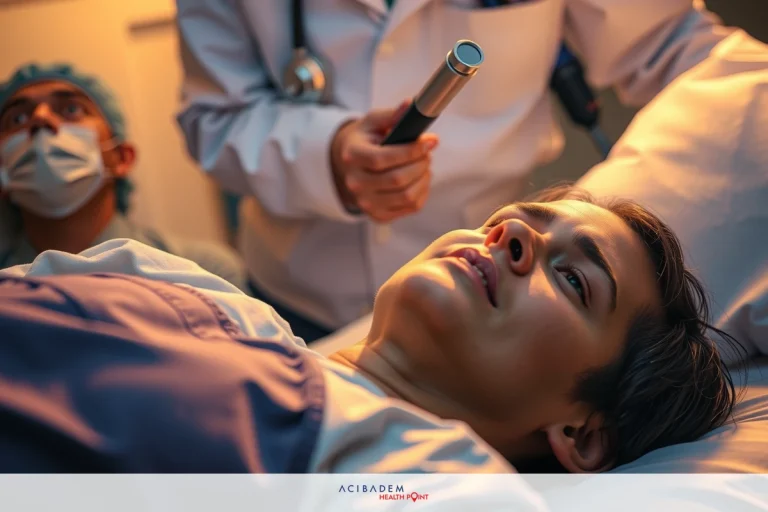Can Rhinoplasty Fix Breathing Problems?
Can Rhinoplasty Fix Breathing Problems? Nasal obstruction, a common issue for many individuals, can drastically hinder one’s quality of life. Numerous elements contribute to this problem; some are congenital while others result from injuries or the natural aging process. When conservative treatments fail to address these issues adequately, rhinoplasty emerges as an effective solution.
Rhinoplasty is more than just a cosmetic enhancement procedure. It also holds considerable potential for rectifying functional problems like nasal obstruction and improving airflow – often overlooked benefits of this treatment option. Understanding the correlation between rhinoplasty and improved breathing requires us to understand the nature of nasal obstructions and how surgical intervention might provide relief.
The intricacies of functional rhinoplast significantly enhance its therapeutic value in treating respiratory issues associated with nasal blockages. This article elucidates these aspects with precision while providing valuable insights into how functional rhinoplasty can be instrumental in resolving persistent breathing difficulties.
Understanding Nasal Obstruction
Nasal obstruction, a prevalent condition disrupting normal breathing patterns, arises from various causes. Some individuals are born with anatomical irregularities contributing to this issue while others may develop them due to aging or an unfortunate accident causing injury to the nasal structure. The condition’s prime characteristic is a noticeable difficulty in air passage through the nose, resulting in disrupted sleep, snoring and even speech impediment.
This impairment of airflow can be intermittent or constant. Intermittent obstructions often occur when allergens inflame the nasal tissues leading to temporary blockages a common phenomenon during allergy season for many people. On the other hand, constant obstructions might result from structural anomalies like deviated septum which require medical intervention for resolution.
The role that rhinoplasty plays here is significant as it provides a surgical solution for rectifying these anatomical issues causing persistent nasal obstruction. Functional rhinoplasty specifically aims at correcting such problems rather than focusing solely on aesthetic enhancements of one’s nose shape and size.
In functional rhinoplasty procedures, surgeons strategically reshape certain parts of your inner nose structure – like turbinates and septum – to ensure improved airflow without compromising your natural facial aesthetics. This focus on maintaining balance between functionality and appearance makes functional rhinoplasty an ideal choice for those seeking relief from chronic breathing difficulties due to nasal obstruction.
Therefore understanding how this procedure addresses underlying causes of impaired breathing forms an integral part of our discussion about treating respiratory issues via surgical methods such as rhinoplasty.
Functional Rhinoplasty: Improving Airflow
Functional rhinoplasty, a specific type of nose surgery, focuses on improving airflow by rectifying anatomical irregularities causing nasal obstruction. Unlike cosmetic rhinoplasty that primarily serves aesthetic purposes, functional rhinoplasty aims at enhancing the nose’s operational efficiency. It is a preferred choice for individuals seeking relief from persistent breathing difficulties due to structural issues within their noses.
The process involves strategic reshaping and repositioning of structures like the septum and turbinates inside the nose. By doing so, it ensures an unobstructed pathway for air to flow through, thereby easing any discomfort associated with impaired breathing. This surgical procedure is highly individualized as every patient presents unique anatomical features requiring specific intervention.

Moreover, unlike common misconceptions around its effect on appearance, functional rhinoplasty does not necessarily alter your facial aesthetics significantly. The primary focus remains on optimizing functionality while preserving natural looks wherever possible unless combined with cosmetic enhancements in a single session.
It’s paramount to understand that while functional rhinoplasty offers promising results in addressing obstructed airflow and consequent breathing problems; its success largely depends upon accurate diagnosis & careful planning by experienced medical professionals specializing in this field.
So if you’re somebody plagued by chronic nasal obstruction despite trying various conservative treatments without much success; exploring functional rhinoplasty could be your next step towards reclaiming normalcy in your respiratory patterns – all thanks to improved airflow post-surgery!
Benefits of Rhinoplasty for Breathing Problems
Rhinoplasty, particularly functional rhinoplasty, has shown promising results in addressing breathing problems caused by nasal obstruction. It’s a surgical technique capable of rectifying anatomical issues within the nose that hinder normal airflow – thus significantly improving an individual’s quality of life.
It provides a sustainable solution to persistent breathing difficulties arising from structural issues within the nose. By correcting these irregularities through surgery, rhinoplasty paves way for enhanced airflow and consequently better respiratory function. People who undergo this procedure often report noticeable improvement in their ability to breathe freely post-surgery.
Beyond improved respiration, another potential benefit is alleviating sleep-related complications associated with impaired breathing such as snoring or sleep apnea. This aspect can greatly contribute towards enhancing one’s overall health & wellbeing given how crucial sound sleep is for our bodies’ optimal functioning.
Although functional rhinoplasty primarily focuses on improving functionality over aesthetics; it does not necessarily compromise on your appearance. The surgeons aim at maintaining balance between both aspects wherever possible unless there are specific requests or needs for cosmetic enhancements too during the same session.
It’s also worth noting that while non-invasive treatments might provide temporary relief from symptoms related to nasal obstruction; opting for functional rhinoplasty could offer you a long-term solution addressing root causes behind your persistent breathing difficulties – making it an ideal choice if conservative methods have failed to bring about desired improvements so far.
Remember though – like any other medical procedure; successful outcomes largely depend upon accurate diagnosis coupled with careful planning & execution by experienced professionals specializing in this field!
Frequently Asked Questions
What exactly does functional rhinoplasty entail?
Functional rhinoplasty is a surgical procedure designed to correct structural irregularities within the nose that impair normal airflow. The focus is on improving functionality - ensuring an unobstructed pathway for air to flow through, rather than altering aesthetics.
How different is functional rhinoplasty from cosmetic rhinoplasty?
While both procedures involve reshaping and repositioning of nasal structures; the primary goal of functional rhinoplasty is enhancing the operational efficiency of nose by rectifying anatomical issues causing breathing difficulties. Cosmetic rhinoplasty, on the other hand, primarily serves aesthetic purposes like altering shape or size of one's nose.
Does functional rhinoplasty drastically change my appearance?
Not necessarily! Although changes in your nasal structure will be made during surgery, these alterations are aimed at optimizing functionality while preserving natural looks wherever possible unless combined with cosmetic enhancements in a single session.
Can I expect immediate improvement in my breathing post-surgery?
Improvement may not be instant as it takes time for your body to heal post-surgery. However, patients often report noticeable enhancement in their ability to breathe freely after recovery period.











